The Missionary Oblates of Mary Immaculate run the Oblate School of Theology on a sizable campus on the North Side of San Antonio, not far from where I grew up, and near some former regular haunts of mine. Even though the campus is on Oblate Dr., and I drove by that street often for years, I had no notion of its existence until this year.
On March 12, another pleasantly warm day, I went with Jay, my nephew Dees and his girlfriend Eden to take a look around the campus. A gilded St. Eugene de Mazenod greets you at the entrance, in front of the handsome Gayle and Tom Benson Theological Center.
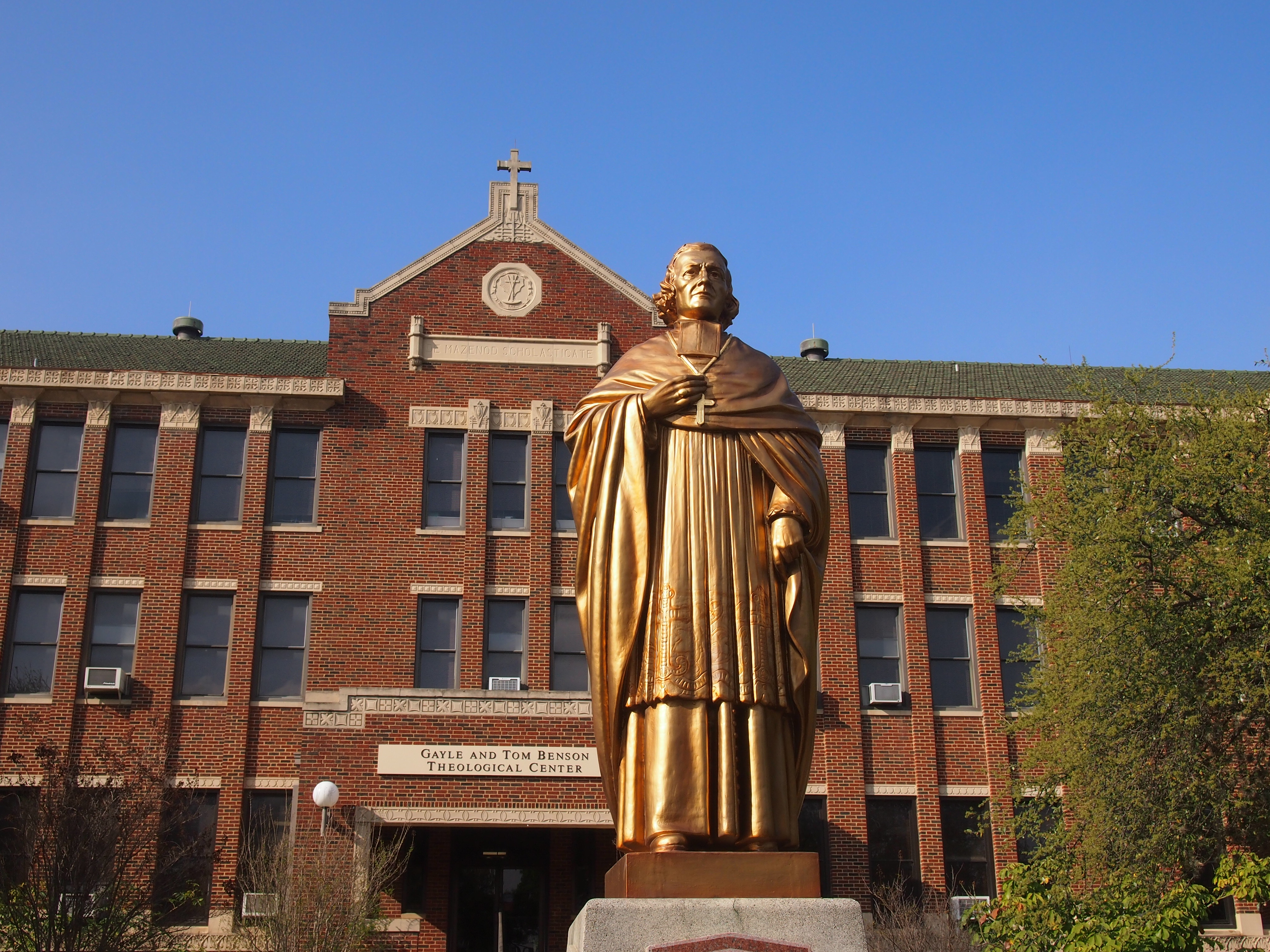 Eugene de Mazenod founded the Oblates in post-revolutionary France 200 years ago. Tom Benson is best known as the billionaire owner of the New Orleans Saints, but anyone living in San Antonio in the last 50 years or so knows him as the owner of Tom Benson Chevrolet. In any case, he gives a lot of money to Catholic causes.
Eugene de Mazenod founded the Oblates in post-revolutionary France 200 years ago. Tom Benson is best known as the billionaire owner of the New Orleans Saints, but anyone living in San Antonio in the last 50 years or so knows him as the owner of Tom Benson Chevrolet. In any case, he gives a lot of money to Catholic causes.
According to the school’s web site, “the Missionary Oblates of Mary Immaculate came to Texas in 1849, at the urgent request of Texas’ first Roman Catholic Bishop, to preach Christ’s message and to serve the People of God, especially the poor and marginalized.
“The Oblate School of Theology was founded in San Antonio in 1903 as the San Antonio Philosophical and Theological Seminary. The School’s initial goal and mission was to educate young men to serve as Oblate missionaries in Texas, New Mexico, Louisiana, Mexico and the Philippines… Today, Oblate School of Theology prepares men for priesthood from many dioceses across the United States and a number of religious communities.”
I have to add that in the early 20th century, the part of San Antonio that’s now home to the Oblates wasn’t part of San Antonio. Assuming they founded their school where it is now — and I haven’t found any information to suggest otherwise — the land the Oblates bought lay in the countryside, with the city to the south. There were no housing developments or highways nearby; all that would come in the 1950s, when the campus and the land around it were annexed by the city, as shown on this interesting growth-of-San Antonio map (which also shows the curious fact that the pre-1940 shape of the city was square).
As nice as it is, we didn’t come just to see the Benson building. Rather, we were intrigued by a grotto on campus patterned after the famed grotto in Lourdes. A full-sized replica, I read, made of concrete.
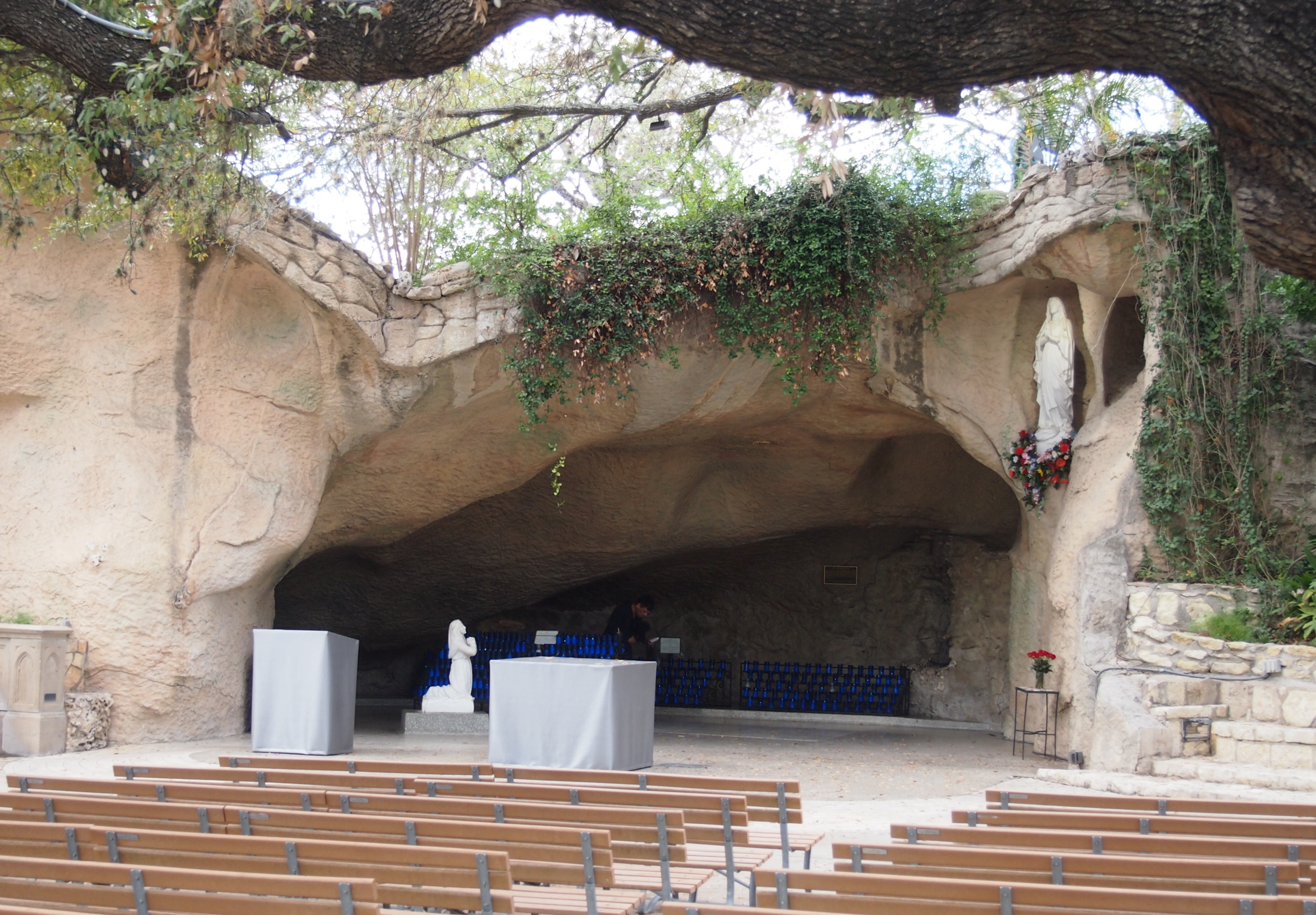 The San Antonio grotto’s been on the site since the early 1940s. In fact, according to its plaque, the Oblates dedicated it on Sunday, December 7, 1941. I’m sure that the date had been picked in advance, and events in the wider world weren’t going to call it off. Then again, maybe the Oblates were up early that morning Central Time, before any ill-tidings came from Hawaii.
The San Antonio grotto’s been on the site since the early 1940s. In fact, according to its plaque, the Oblates dedicated it on Sunday, December 7, 1941. I’m sure that the date had been picked in advance, and events in the wider world weren’t going to call it off. Then again, maybe the Oblates were up early that morning Central Time, before any ill-tidings came from Hawaii.
Built on top of the grotto, accessible by stairs, is the Tepeyac de San Antonio, dedicated on July 25, 1999, depicting the Virgin of Guadalupe appearing before St. Juan Diego in December 1531. This isn’t the first depiction of that scene that I’ve run across.
Here’s the Virgin.
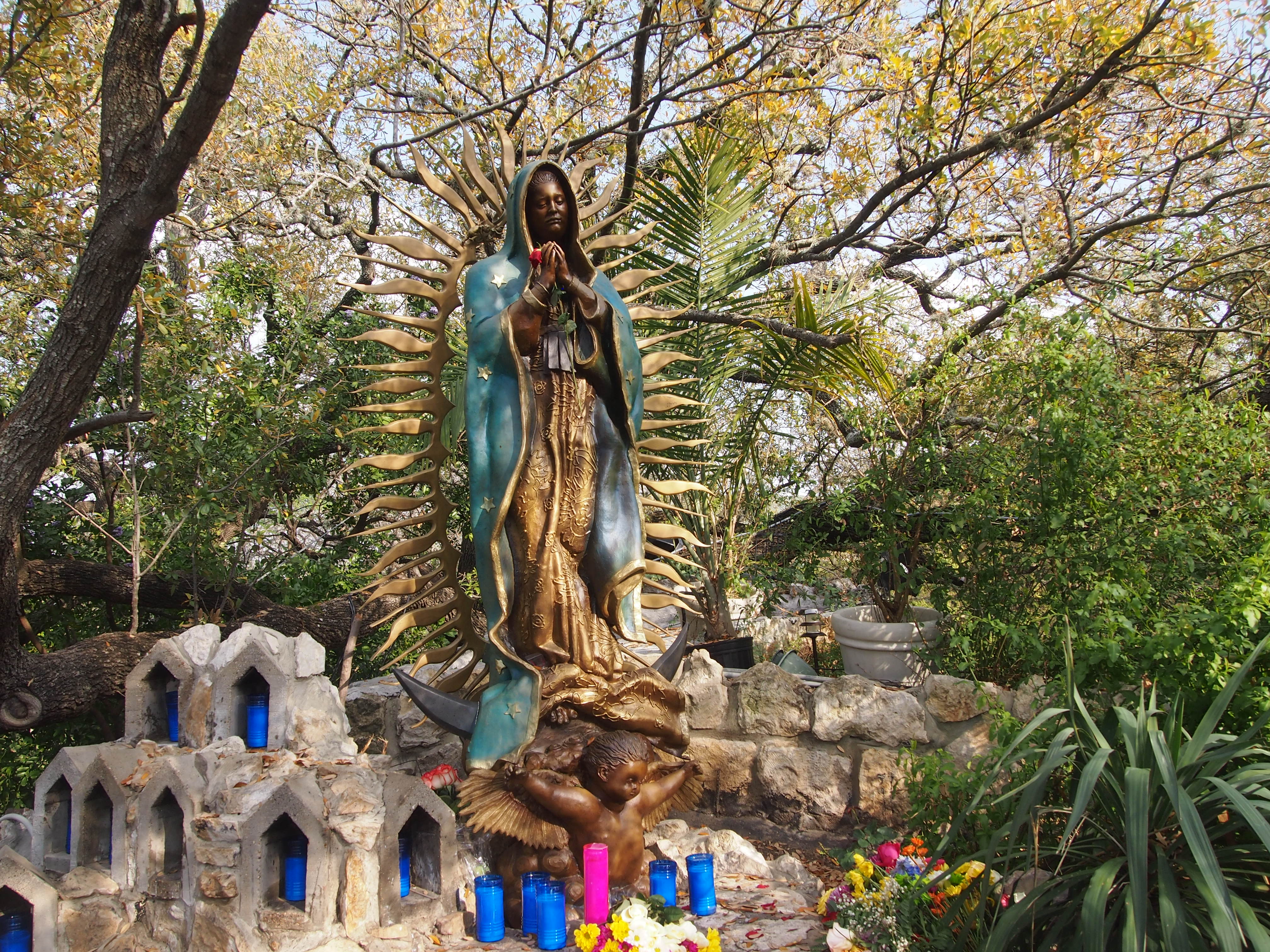 And Juan Diego.
And Juan Diego.
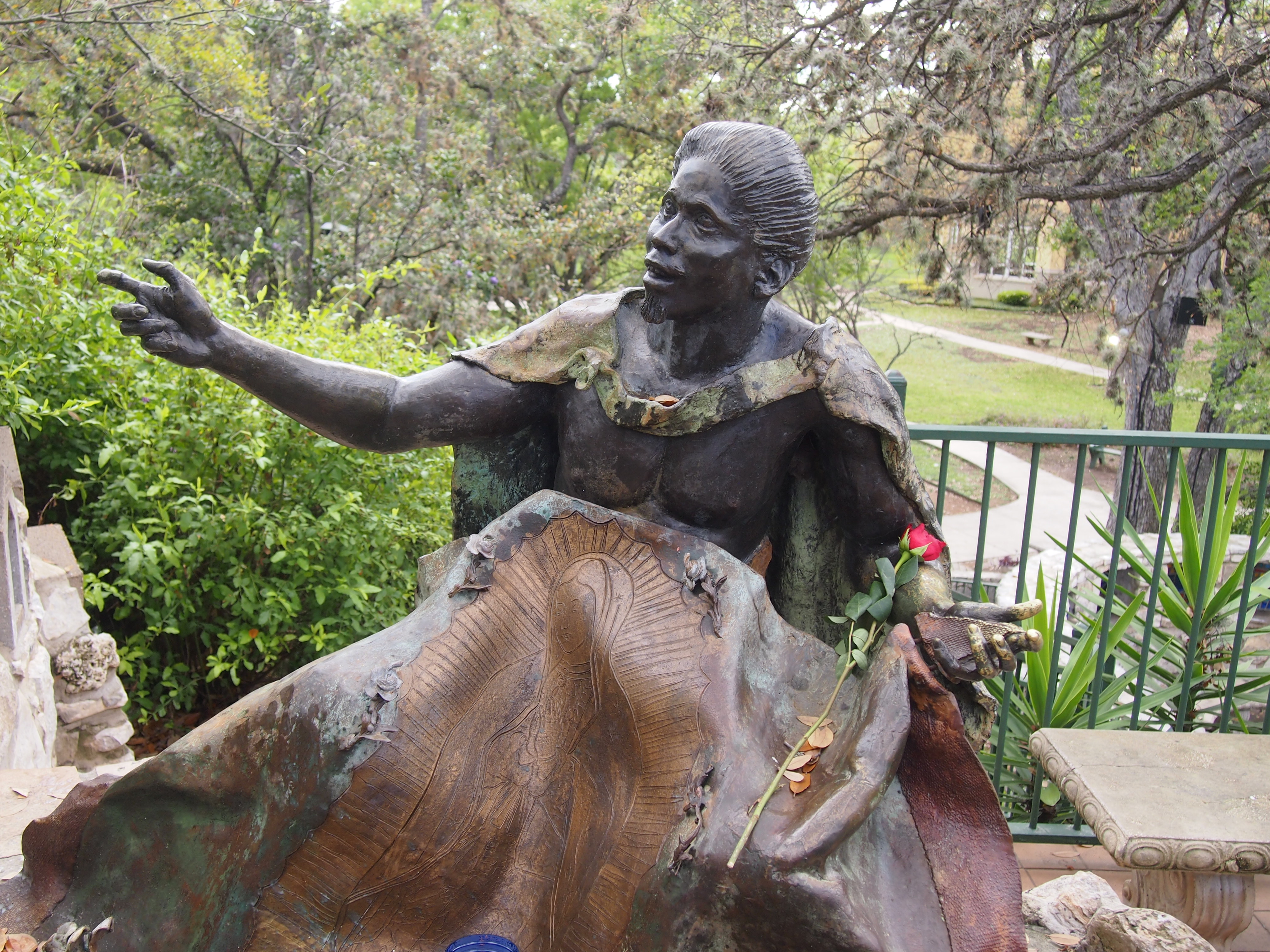 The Oblate campus also features a chapel, some business offices, places for visiting scholars, a gift shop (no post cards; I’d have bought some saint cards) and a fair amount of public art, such as a freestanding metal structure with a frieze of Oblates on horseback — “The Cavalry of Christ,” who were 19th-century missionaries in South Texas. ‘Ot and sweaty business, no doubt.
The Oblate campus also features a chapel, some business offices, places for visiting scholars, a gift shop (no post cards; I’d have bought some saint cards) and a fair amount of public art, such as a freestanding metal structure with a frieze of Oblates on horseback — “The Cavalry of Christ,” who were 19th-century missionaries in South Texas. ‘Ot and sweaty business, no doubt.
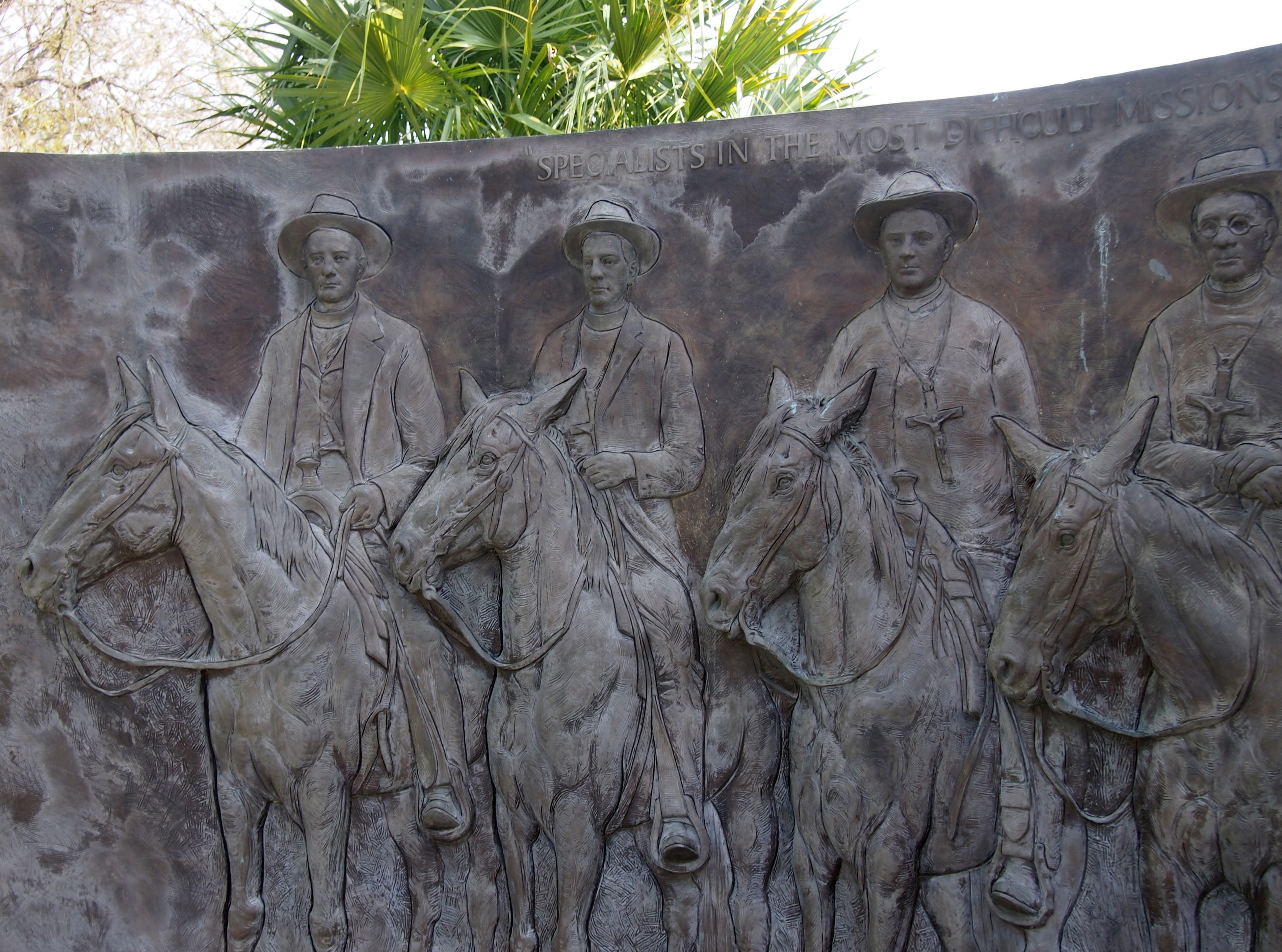 A garden behind the Benson building.
A garden behind the Benson building.
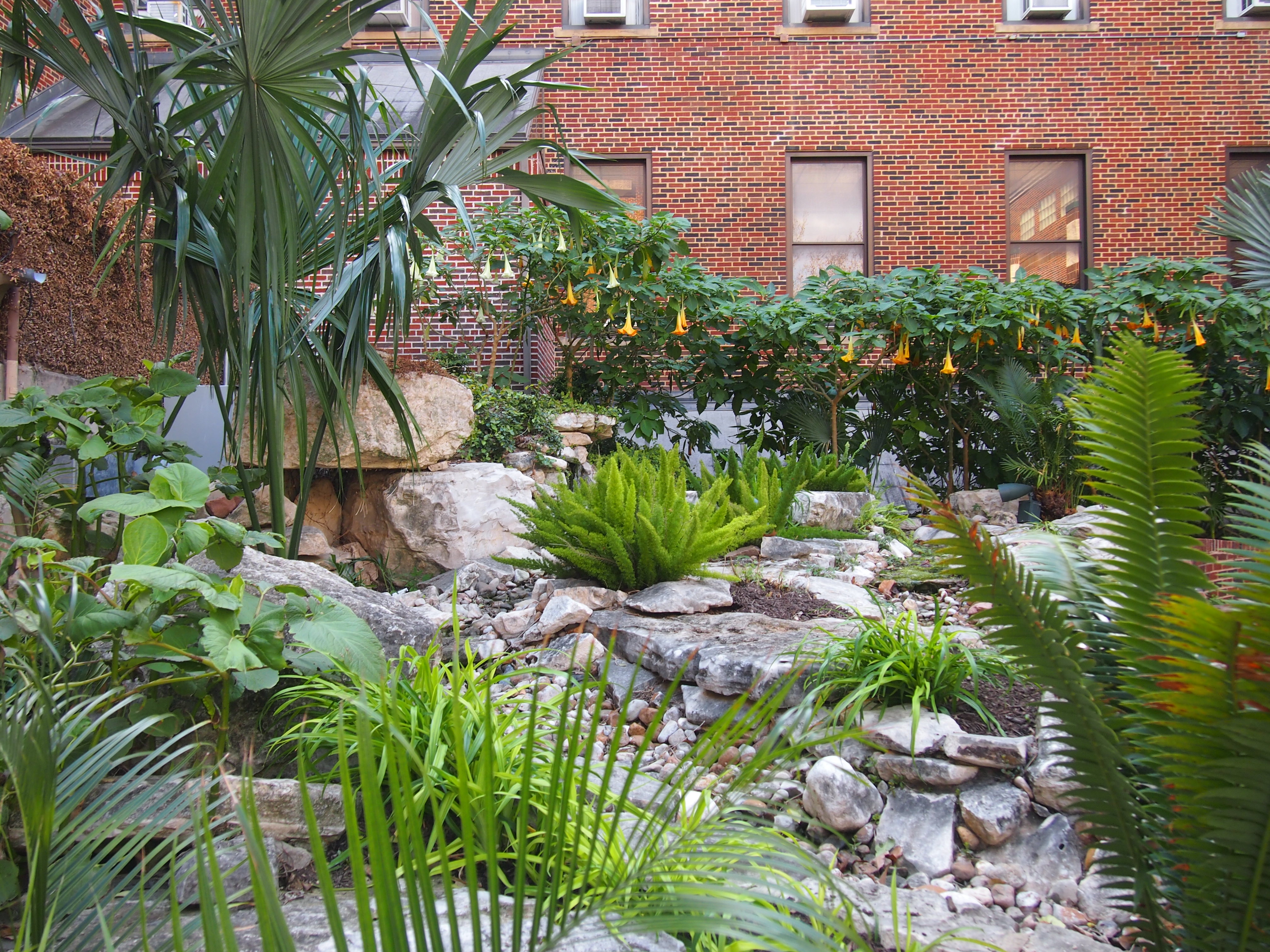 A place for Oblates who’ve passed on.
A place for Oblates who’ve passed on.
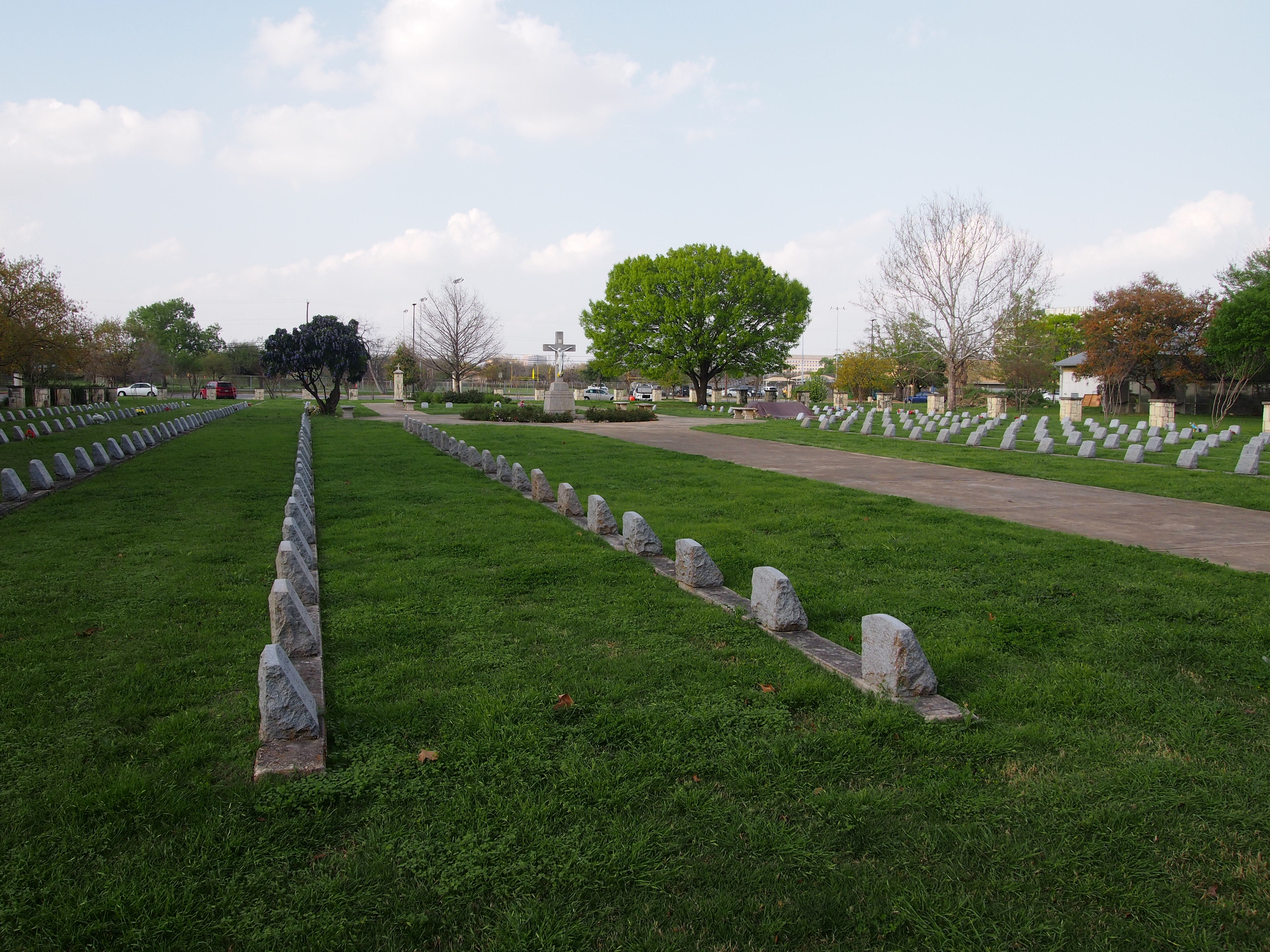 Stations of the Cross in a style I’ve never seen.
Stations of the Cross in a style I’ve never seen.
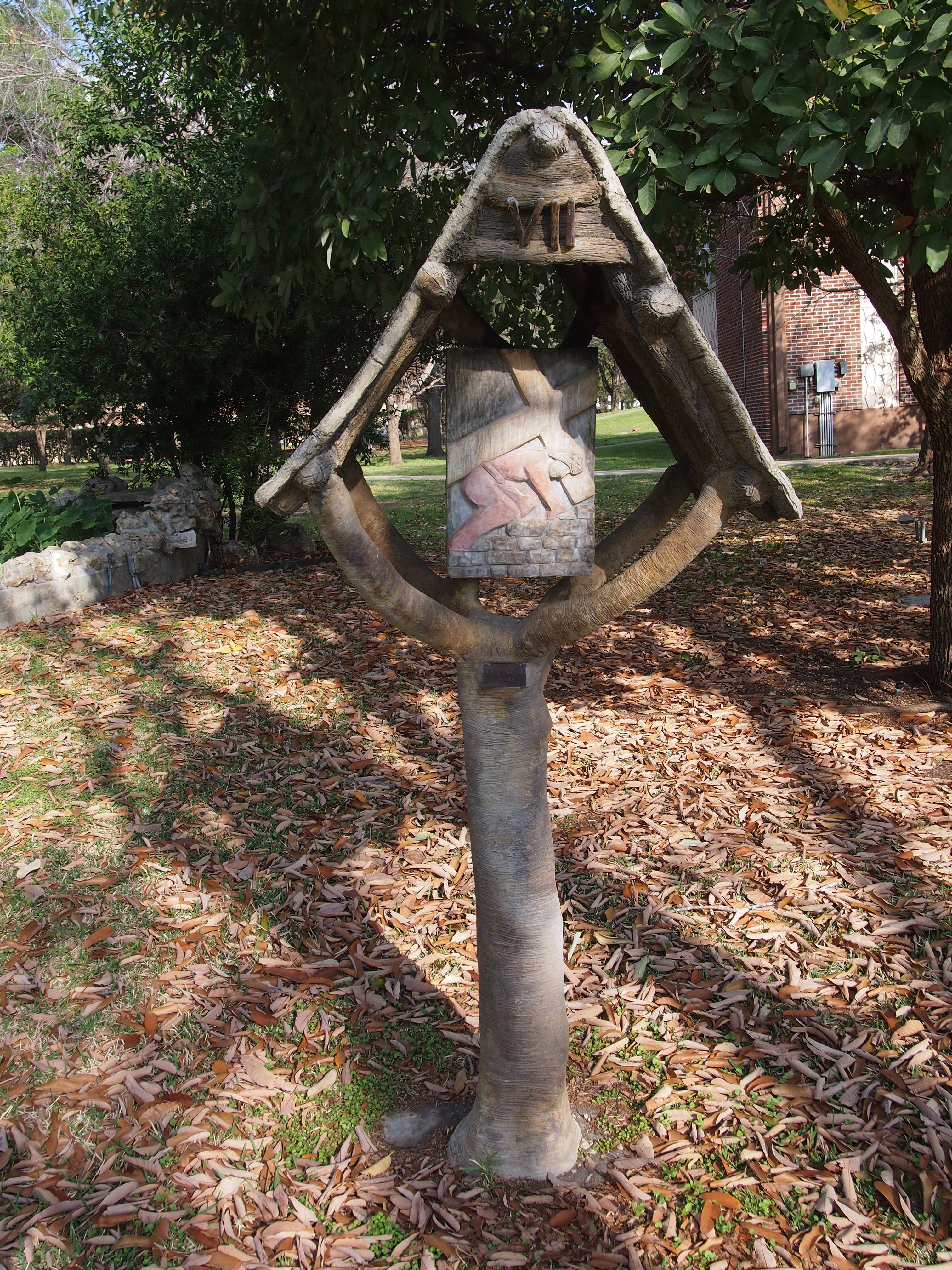 And “missions on a stick.”
And “missions on a stick.”
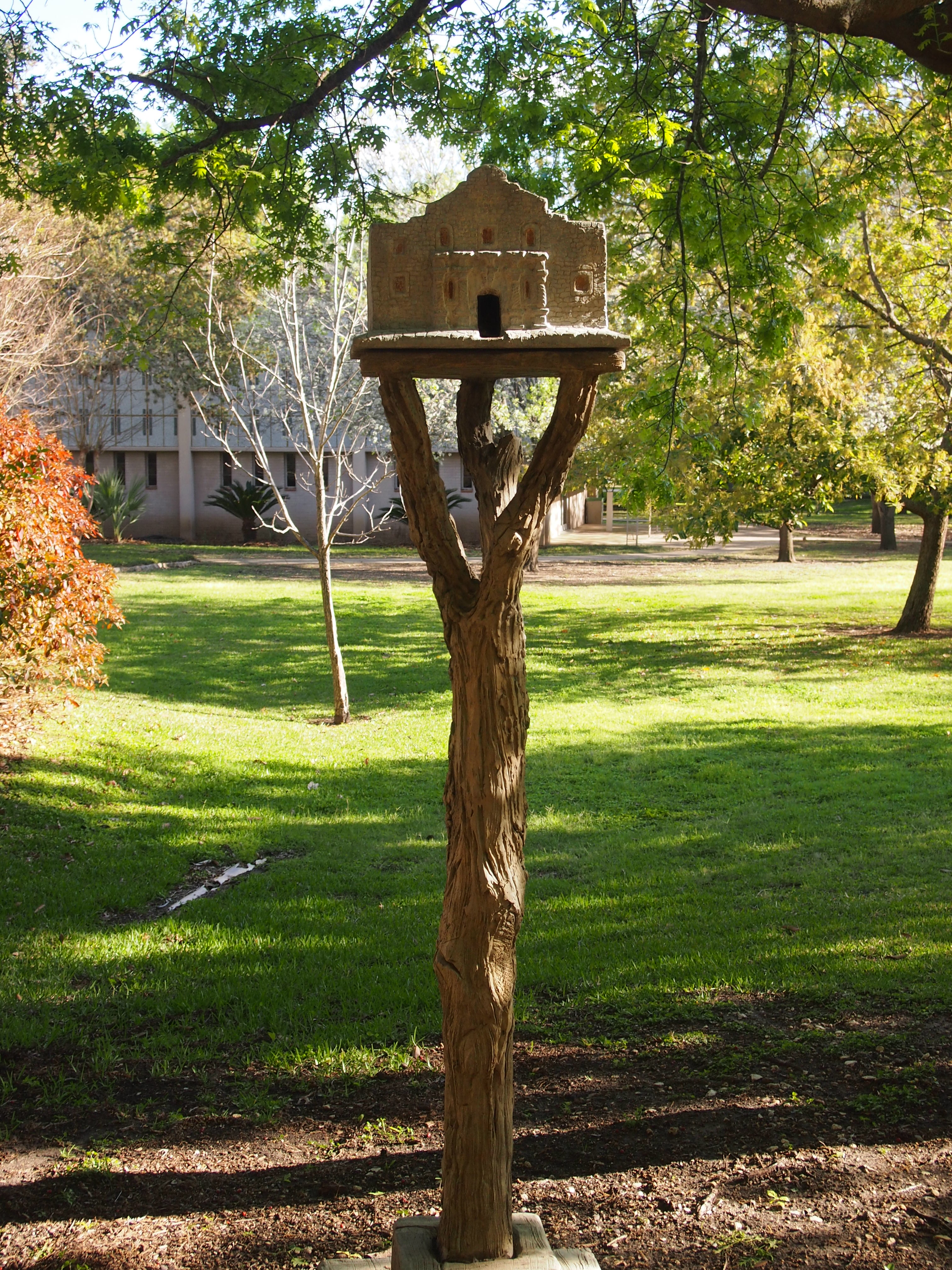 There were five of them, depictions of the five Spanish missions in San Antonio. That includes the best known of them, the Alamo.
There were five of them, depictions of the five Spanish missions in San Antonio. That includes the best known of them, the Alamo.